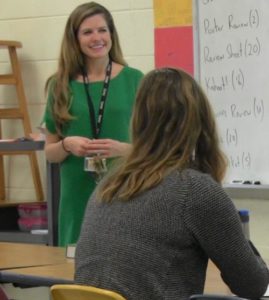
What does the start of a school turnaround look like? When Mark Johnson left West Charlotte High School as his Teach for America stint ended, he likely could not have imagined a bright future for the school. I arrived a year later, in 2009. The high-poverty, highly segregated school was struggling, and I stayed only one year.
But my heart didn’t leave West Charlotte. When I had the chance to return in 2014 and make a difference as a teacher-leader, I jumped on it — I wanted to help spark a turnaround. This year, when Johnson, now North Carolina’s new state superintendent, visited, he said he saw “a different world over here.”
When he taught at the school, he explained as I showed him around, the “team” of instructors teaching earth sciences had exactly one meeting during two years. I remembered the mindset then: in my first year at West Charlotte, a co-worker threw a box at me for asking if I could have access to the supply closet to look for lab materials. And my mentor teacher’s best — only — advice for classroom management? Yell louder.
But now, three years after I returned, the school’s science wing is calm, students are learning and showing growth, and teachers collaborate daily.
Here’s how it happened…
–Charlotte, N.C., Multi-Classroom Leader® Erin A. Burns in How to Extend the Reach of Great Teachers in Turnaround (or Any) Schools
Biology MCL Erin A. Burns has written before about aspects of her work leading a teaching team focused on student growth and powered by engaging lessons that respond to what the data tell them about students’ needs. In this column, she introduces the readers of The 74 to the basics of multi-classroom leadership and how her ability to provide extensive, intensive support to teachers while continuing to work directly with students has made a marked difference in student achievement and school culture. Get inspired–read her full column here.
Note: Public Impact® and Opportunity Culture® are registered trademarks; Multi-Classroom Leader®, Multi-Classroom Leadership™, and MCL™ are trademarked terms, registration pending.
